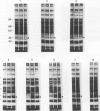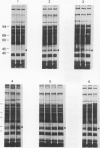Abstract
A previous study has shown that there are high levels of an abnormally-fucosylated form of haptoglobin (FHp) in the blood of cancer patients (Thompson & Turner, 1987b). In this study, we investigated the expression of this substance in serial blood specimens from women with ovarian or breast cancer who were undergoing cytotoxic chemotherapy. The level of FHp was related to patient response to therapy status, this latter index being an indirect determination of tumour burden. FHp levels did not correlate with gross liver metastasis (as shown by CT scans or the blood levels of liver enzymes). This conclusion was further supported by results from patients with hepatocellular cancer. FHp was elevated in most of these patients, but the pattern of change did not correlate with variations in the level of the hepatoma marker, alpha-foetoprotein. It seems likely that FHp is produced by the liver. Primary and secondary tumours could release substances, such as cytokines, which interfere with fucose metabolism in the liver.
Full text
PDF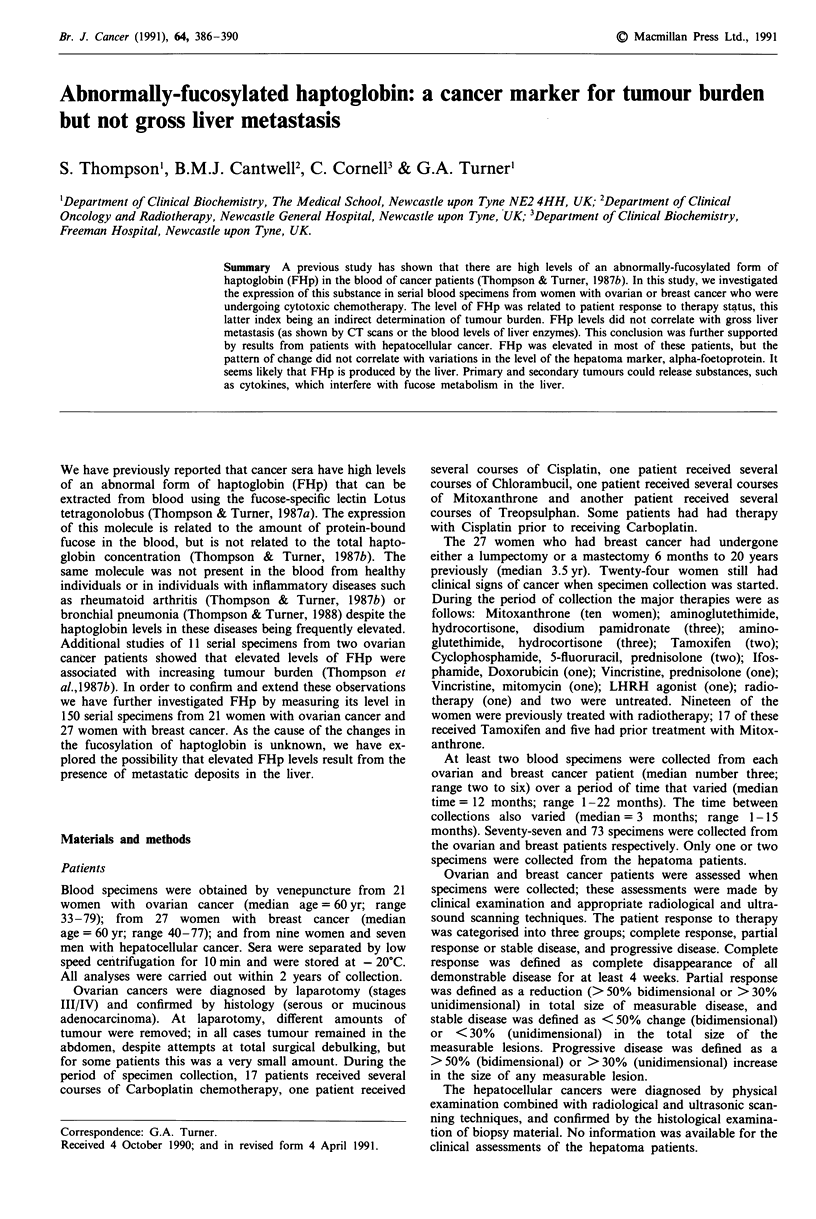
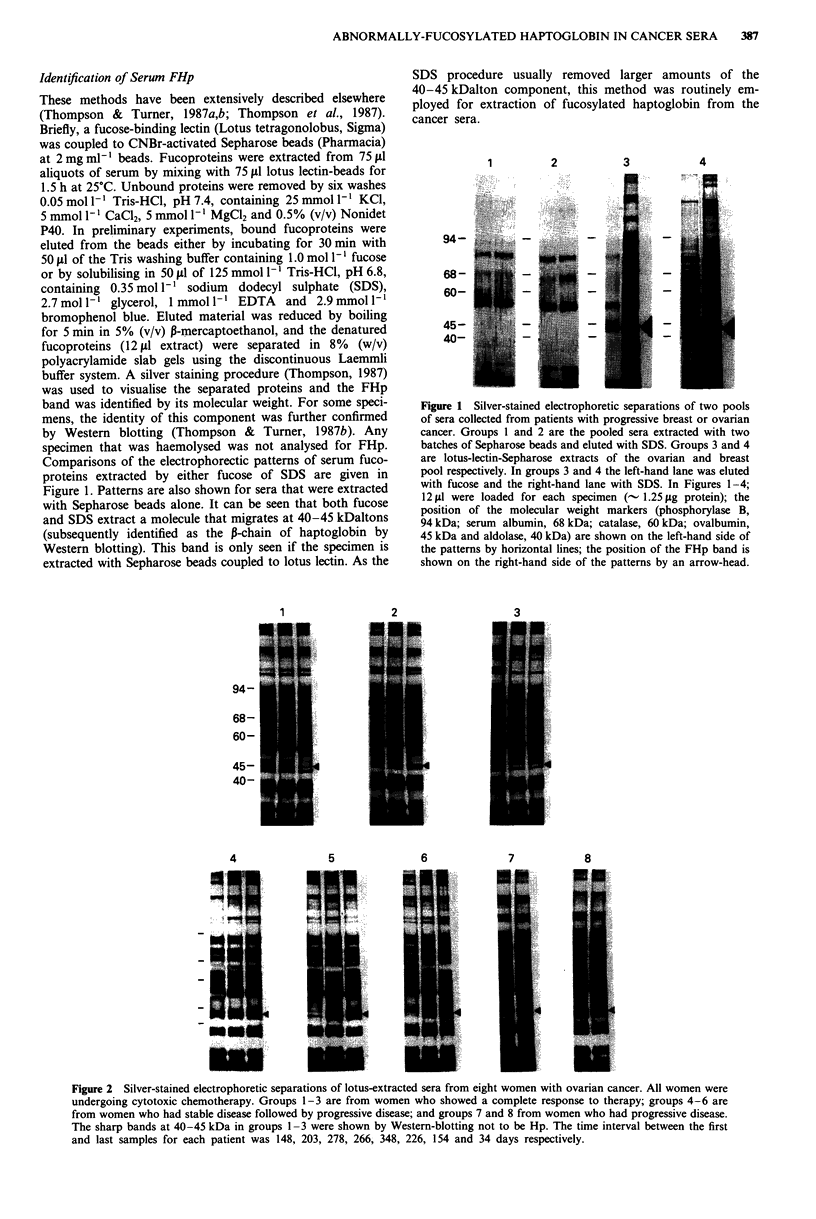
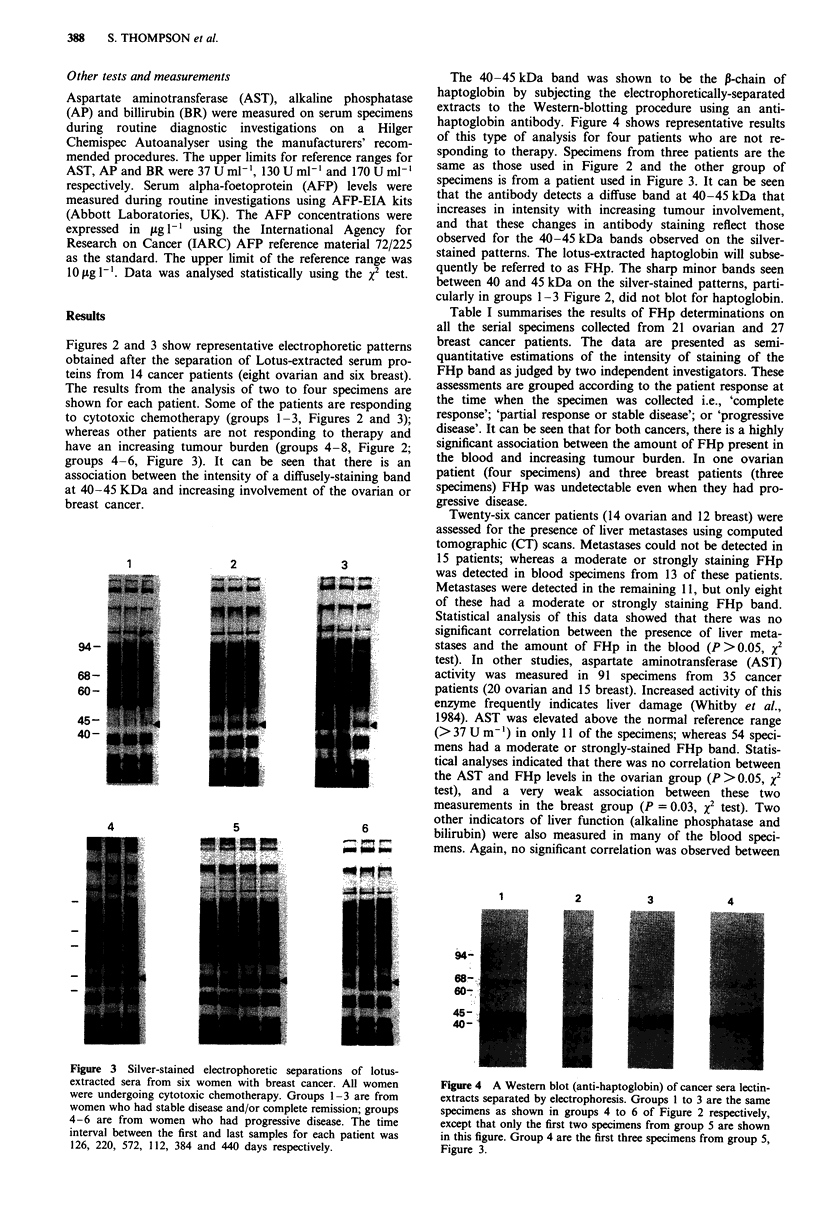
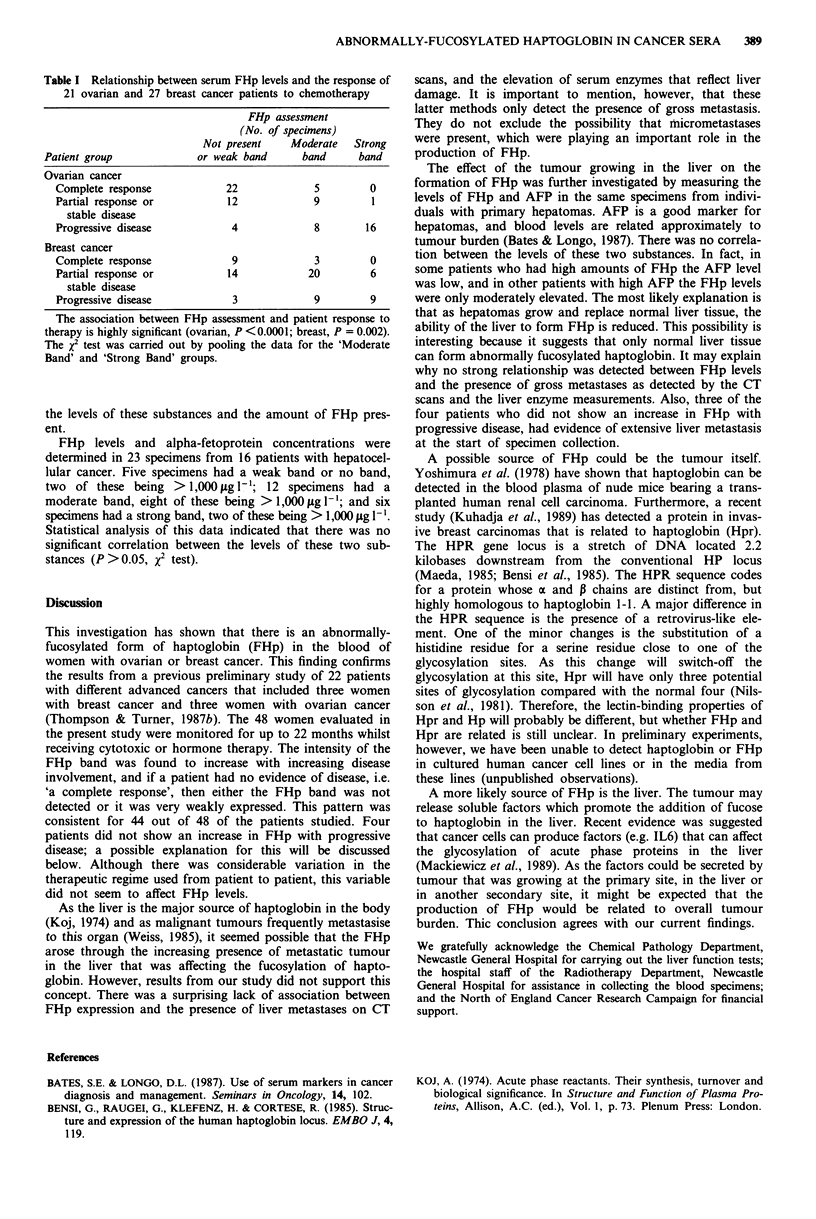
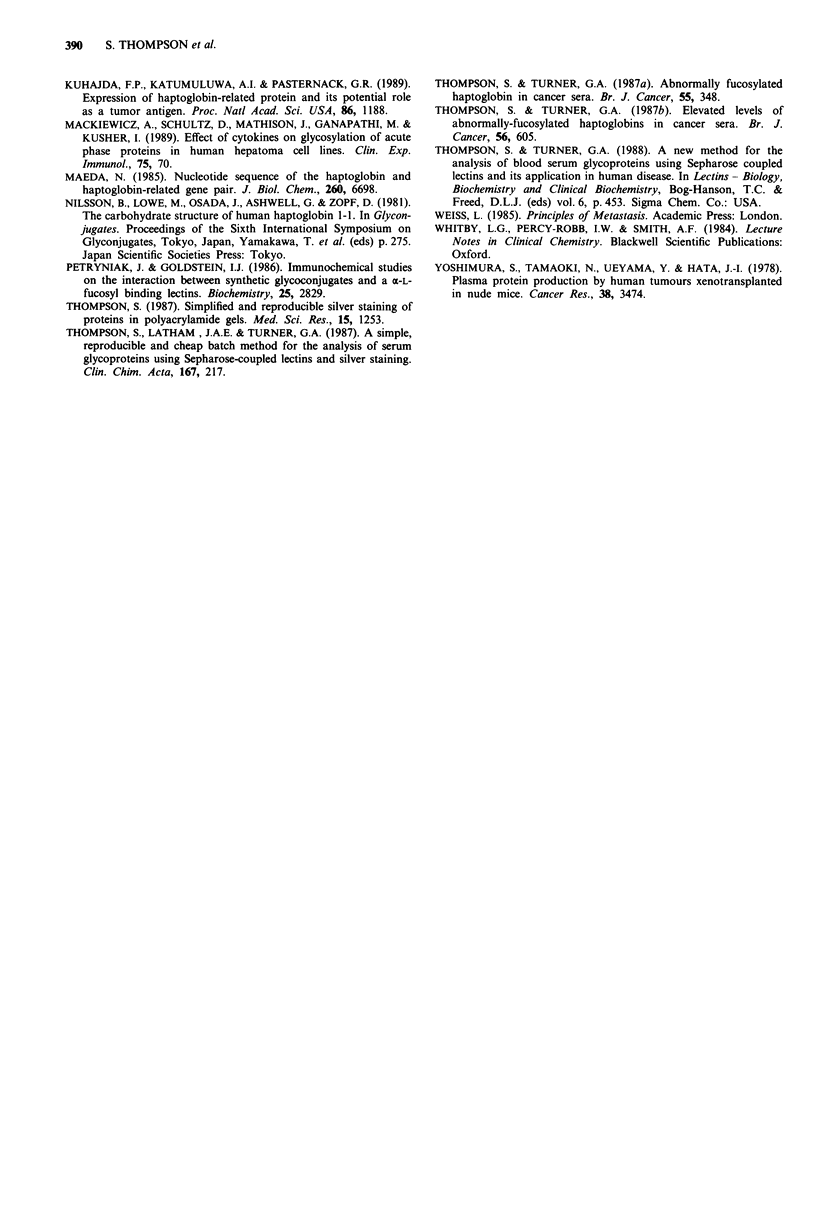
Images in this article
Selected References
These references are in PubMed. This may not be the complete list of references from this article.
- Bates S. E., Longo D. L. Use of serum tumor markers in cancer diagnosis and management. Semin Oncol. 1987 Jun;14(2):102–138. [PubMed] [Google Scholar]
- Bensi G., Raugei G., Klefenz H., Cortese R. Structure and expression of the human haptoglobin locus. EMBO J. 1985 Jan;4(1):119–126. doi: 10.1002/j.1460-2075.1985.tb02325.x. [DOI] [PMC free article] [PubMed] [Google Scholar]
- Kuhajda F. P., Katumuluwa A. I., Pasternack G. R. Expression of haptoglobin-related protein and its potential role as a tumor antigen. Proc Natl Acad Sci U S A. 1989 Feb;86(4):1188–1192. doi: 10.1073/pnas.86.4.1188. [DOI] [PMC free article] [PubMed] [Google Scholar]
- Mackiewicz A., Schultz D., Mathison J., Ganapathi M., Kushner I. Effect of cytokines on glycosylation of acute phase proteins in human hepatoma cell lines. Clin Exp Immunol. 1989 Jan;75(1):70–75. [PMC free article] [PubMed] [Google Scholar]
- Maeda N. Nucleotide sequence of the haptoglobin and haptoglobin-related gene pair. The haptoglobin-related gene contains a retrovirus-like element. J Biol Chem. 1985 Jun 10;260(11):6698–6709. [PubMed] [Google Scholar]
- Petryniak J., Goldstein I. J. Immunochemical studies on the interaction between synthetic glycoconjugates and alpha-L-fucosyl binding lectins. Biochemistry. 1986 May 20;25(10):2829–2838. doi: 10.1021/bi00358a014. [DOI] [PubMed] [Google Scholar]
- Thompson S., Latham J. A., Turner G. A. A simple, reproducible and cheap batch method for the analysis of serum glycoproteins using sepharose-coupled lectins and silver staining. Clin Chim Acta. 1987 Aug 14;167(2):217–223. doi: 10.1016/0009-8981(87)90374-3. [DOI] [PubMed] [Google Scholar]
- Thompson S., Turner G. A. Elevated levels of abnormally-fucosylated haptoglobins in cancer sera. Br J Cancer. 1987 Nov;56(5):605–610. doi: 10.1038/bjc.1987.249. [DOI] [PMC free article] [PubMed] [Google Scholar]
- Yoshimura S., Tamaoki N., Ueyama Y., Hata J. Plasma protein production by human tumors xenotransplanted in nude mice. Cancer Res. 1978 Oct;38(10):3474–3478. [PubMed] [Google Scholar]




